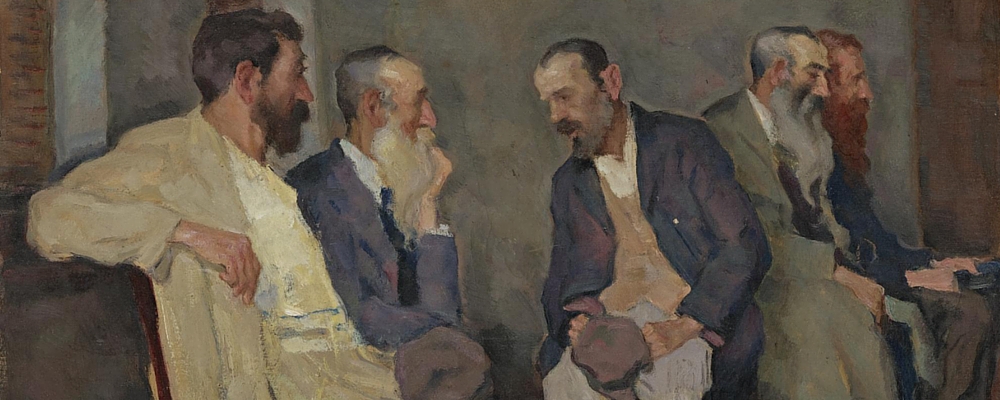
Sometimes complex human questions become clearer when we go back to our roots – even our childhood roots. University of Chicago Laboratory School teacher and MacArthur Genius Vivian Paley addressed the universal human experience of feeling excluded after forty years of observing children in nursery school and kindergarten. Despite its unlikely source, Paley’s inclusion rule (and the title of her most popular book), “You can’t say you can’t play,” may be an important reflection for organizational leaders who have learned that hiring a more diverse workforce is only a baby step toward creating a culture of inclusion in which all individuals can flourish.
We aren’t advocating a return to preschool, or even the legislation of human interaction with a set of childhood “rules.” But there are important things to learn from the evolution of human nature – ideas and behaviors that have been hardwired into us since before our earliest sentient moments.
Read More

Three unrelated experiences came together in the last few weeks that led me to revisit an idea that has stayed in the back of my mind for quite some time: MIT Professor Edgar Schein’s notion of “humble inquiry,” which Schein defines as “the fine art of drawing someone out, of asking questions to which you do not already know the answer, or building a relationship based on curiosity and interest in the other person.”
Read More

Creative writers who are just starting out often hear the same piece of advice. They must hone their ability “to familiarize the strange and mystify the familiar,” in the wise words of Toni Morrison.
The concept is called “defamiliarization.” Coined in 1917 by Russian literary theorist Viktor Shklovsky, it’s the notion that by presenting something familiar in a strange way (or vice versa), we come to understand it more deeply. But when you really think about it, don’t we encounter defamiliarization every day – in real life, not just in the books we read?
Read More

Wellness initiatives are on the rise in the American workplace: according to the Global Wellness Institute (GWI), 72 percent of U.S. employers from 2010 to 2015 purchased services to address employees’ health risks and promote healthy lifestyle choices. It’s more and more common for companies to offer gym membership reimbursements or standing work desks – anything to keep employees healthy, well and ready to work.
And yet the many programs that encourage employees to quit smoking, to lose weight, or to get their flu shot all share a pretty glaring blind spot.
Read More

Recently, I spoke with Gail Monahan, a Books@Work participant, about her experience in our programs. Gail is a Senior Applications Engineer at Fairbanks Morse Engine, an Enpro Industries company. Fairbanks Morse Engine has been a valued Books@Work partner since we first began offering seminars in their Beloit, Wisconsin facility in late 2013. In our discussion, Gail emphasized that Books@Work provides a valuable opportunity explore new subjects and cultures, to get to know your colleagues on a different level and to see things from their perspectives.
Read More

“I was not sorry when my brother died.” So begins Tsitsi Dangarembga’s semi-autobiographical novel Nervous Conditions, the story of Tambudzai, a teenage girl in the former Rhodesia (now Zimbabwe) who lives in two worlds: that of her parents, poor farmers who earn a meager living, and that of her aunt and uncle, whom the British colonists have chosen to receive an education in England and eventually to run the missionary school. I fell in love with Tambu in the first few pages, and as I introduce her to more readers, I have discovered that they take her to their hearts as well. This includes participants in a Books@Work group as well as college students in a “Questions of Identity” seminar.
Read More

Though we often think about creativity as the production of an original work of art—a painting or a novel, perhaps—creativity is also the ability to synthesize and build on information. Creativity is innovation and problem solving; it’s seeing patterns and learning to explain them. When we say that something provokes creativity, we usually mean that it is in some way inspiring or that it encourages people to think outside of the box.
New research on creativity at work, however, indicates that creating the conditions for creativity might be less about inspiring an individual than it is about creating good teams and a space for respectful, common dialogue.
Read More

In his recent TED Talk, Princeton professor Uri Hasson investigates what he calls “a device that can record my memories, my dreams, my ideas, and transmit them to your brain.” Drawing on his research, Hasson argues that this “game-changing technology” already exists—that it has existed for thousands of years, though we are only now learning to understand how it works.
The technology is “human communication” and, most important, “effective storytelling.”
Read More

Last week, we wrote about a recent Pew Internet study that confirmed the American hunger for continued learning opportunities: over the last 12 months, 74% of American adults report participation in some form of personal learning and 63% of employed adults report participation in some form of professional learning. Surprisingly, however, this learning is more likely than not to take place in a physical locale (a school, place or worship, library or a work-related venue) than on the Internet. Recent research on adult learning and development – as well as findings from our seminars – shed light on the complex reasons why adults prefer to learn socially.
Read More









